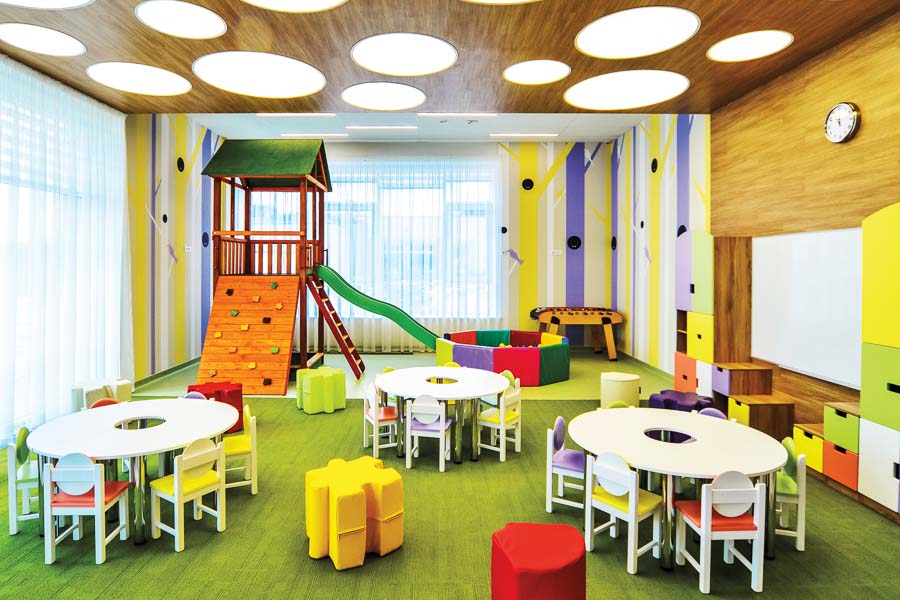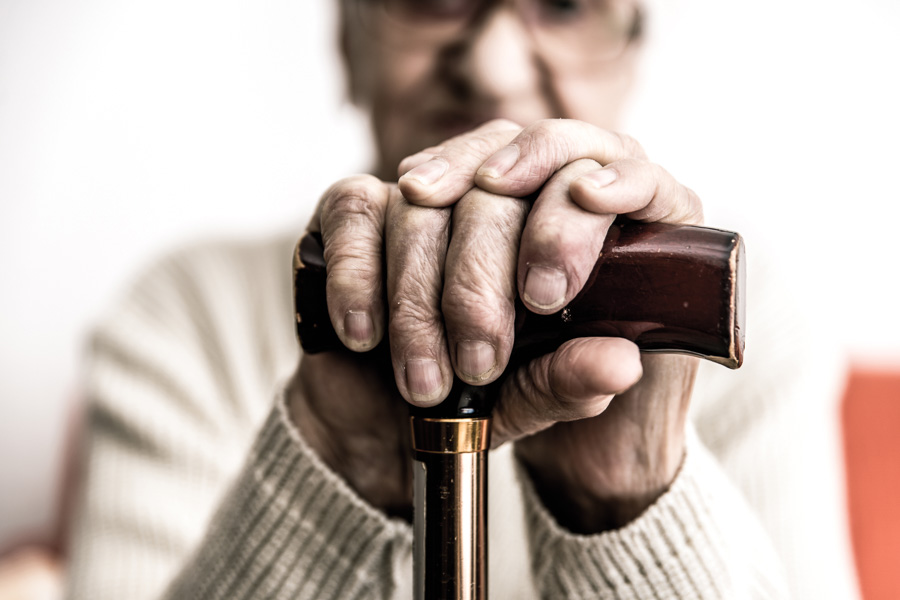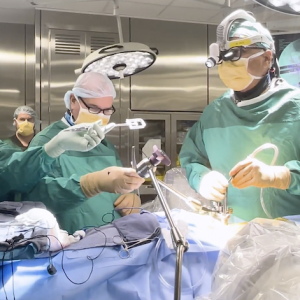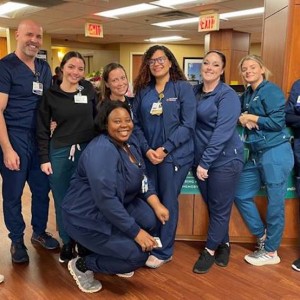For more than 30 years, Dr. Cameron J. Camp has devoted his life to the study of Alzheimer’s, dementia and how to empower those living with either. Somewhere along the way, as industries looked to pharmaceutical solutions and pill panaceas, Camp deviated from the path and found inspiration in a child’s classroom. Applying Montessori methods to the treatment of Alzheimer’s, he found surprising results. SRQ goes inside the mind of the man trying to strengthen others’.

SRQ: What first made you think that the Montessori method could be applied to this kind of research? Dr. Cameron J. Camp: I’d been doing work with older adults and doing some memory training with them when I was working in my first job out of graduate school for a state university. Then I moved to New Orleans and began working with older adults with dementia, and all of the memory aide techniques that were working for other adults were not very useful with this population. At the same time, my children were starting at the Montessori school. I walked into that Montessori classroom and all the dots just connected. I brought a neuropsychologist into the classroom and said, “Am I crazy, or is this the way?” He said, “No. This makes absolute sense.” It just sort of started from there.
What did you see at the Montessori school that made you think there was something to be applied to Alzheimer’s and dementia? It’s what is referred to as a prepared environment. It’s an environment that’s based on people’s abilities and capabilities. It is designed around principles of rehabilitation. [Maria] Montessori was a physician who specialized in pediatric medicine but also rehabilitative medicine. Her classroom was the first place where you had children-sized chairs, children-sized desks, children-sized dust pans and brooms. She basically created assistive devices so the children would be able to be more independent, and to work with each other cooperatively to take care of their own environment. These principles apply very nicely to enabling persons with dementia. These principles I saw in the design of the environment, in the materials and lots of external aides. That’s what a person with dementia benefits from—routines and an environment that gives them guidance and support.

What might a prepared environment look like for someone with Alzheimer’s or dementia? You may want to use clear plastic containers for things in the pantry, so you can see what’s in the container instead of having to guess or remember. Have directions giving people in residential settings permission to use the garden. Please enjoy the garden. Please take a book to read in the libraries. Please help yourself at the water cooler. As well as signage that is large enough for people to read. It’s also about the coordination of the physical and the social environment. For example, you have signage that’s designed to enable a person to navigate; it’s important for staff to give residents practice using these. They might say, could you please show me how to get to the dining room, would you take me there? And so they give residents a chance to practice using the signage, but in a way that is letting them fulfill a social role.
Is the goal simply to keep people active or is there more happening?It’s also about what we call resident-driven communities, where we give control and choice to residents. We have committees that have input on the menu and on the food and may be interested in helping with some food preparation for snacks or for special meals. Residents deciding on outings—where would they like to go? We have an incubator in the Cleveland area called Helen’s Place, and when the residents were given control over outings, the first outing they chose was a restaurant they all liked. The next was a museum. The third month, they chose to go back to the restaurant. An activity director would not have chosen that schedule, and that’s the point. It was their schedule. It’s what they wanted to do. Later they decided they wanted to go on a burger joint tour of Cleveland, so they started thinking of burger joints and writing up reviews after they went there. In Naples, Florida, there is a community where they have a hospitality committee. And when someone from their memory residence goes to the hospital, other residents make them get-well cards, and then go to the hospital to visit them and sing songs for them. And they noticed people in the hospital who don’t get visitors, so now they bring extra cards to give to other people as well. These things spontaneously start happening when you give control of peoples live back to them.
So the aim is more than physical engagement, but mental engagement as well? That’s it exactly. How many times do we ask people with dementia to think and make decisions when they are capable of doing it? They lose the opportunity. There is a saying that Maria Montessori had, ‘Everything you do for me, you take away from me.’ And so you can, with the very best of intentions, try to do everything for somebody but it doesn’t necessarily mean that it will turn out well. In our training we use the example of the parent who tries to do everything for their child. How does that usually work out? This is a human thing. We also work with the basic Montessori values: respect, dignity and equality. Why should a citizen lose these values, lose these rights, just because of a diagnosis?
What kind of effects have you seen that convinced you this is a path to be explored and investigated? We get dramatic reduction in the use of psychotropic medications and dramatic reductions in the use of sleep aids, because when people are awake and active during the day they sleep at night. You see things like reductions in staff turnovers because it becomes a better job when your job is to empower people rather than do everything for them. You see people staying longer in assisted living, you see weight gain, you see people recovering the capacity to do more things for themselves. These principles that we talk about—demonstrating what you want a person to do before you ask them to do it, matching your speed to their speed, giving choice—when these principles are applied, whatever measure you are going to be looking at, you’re going to be getting good outcomes. I was at another residence where there were four different activity stations and the people had to get up and go from one station to another. What happened was they were practicing walking throughout the day, and you saw a reduction in falls, rather than more falls because of walking. They were using the necessary muscles, joints and balance, which is what helps reduce the falls. And when they feel like they are part of a community, when they have something to look forward to, then the challenging behaviors associated with dementia dramatically reduce. It is a byproduct of giving people a better quality of life.
Can this prevent the onset of dementia and Alzheimer’s, or is it primarily about adapting to life with either? We want to get rid of what’s called excess disability. The idea is that when you have an environment that promotes defense, when you have an environment where people don’t have control, then you can see excess disability created that’s not necessary, but shows up when people take on the role of someone who is totally dependent. When you create a prepared environment that is designed to give people control of their lives, then what you see is the reduction of that excess disability and you see people being the best that they’re capable of.
What do you see for the future of Montessori in dementia care? Our vision is for this to become the standard. There is a lot of talk about person-centered care, and we see this as one way at least of making this a reality. This is what the future is going to demand. Family members and residents are going to want to live in a community and know their neighbors, to have a reason to wake up, to have responsibilities, to be able to contribute, to be able to help others. That’s true with or without dementia. Those things don’t go away with a diagnosis. To enable persons to maintain those key elements of living, that is our goal. This benefits across all stages up to and including hospice care. Montessori works across all stages. Montessori works for children 18 months to 18 years, so it should be no surprise that these techniques can be adapted to wherever the individual is at physically or cognitively. When this becomes the standard for memory care, then we will have pushed things forward in the direction we want them to.
About Maria Montessori
An Italian physician and educator, Dr. Maria Montessori is most well-known today for her invention of the educational approach that now bears her name. Centered around exploration, activity, freedom of choice and student collaboration, the Montessori method introduced a philosophy of education in stark contrast to the world of quiet lectures and rote memorization. Since the first Montessori school opened in Rome in 1907, more than 220,000 have opened in more than 100 countries across the globe.









